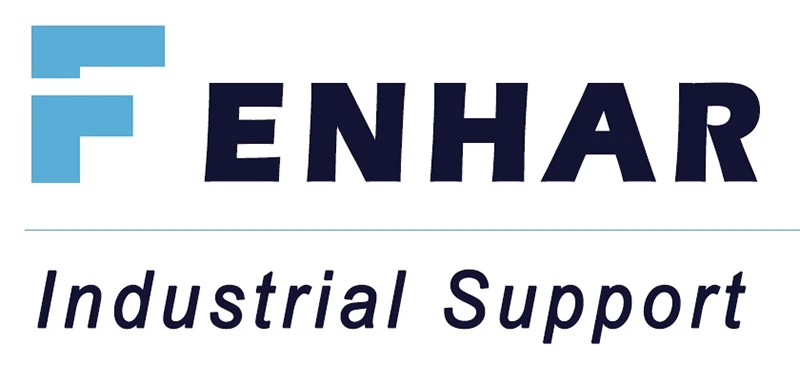Vo svete vákuových vývev, najmä v prípade rotačných lopatkových a suchých vákuových vývev, je výber správneho materiálu lopatiek nevyhnutný pre výkon, životnosť a účinnosť. Izolačné materiály ako G10, G11 a FR4 sú obľúbenou voľbou pre lopatky vákuových čerpadiel vďaka ich jedinečným vlastnostiam, ako je vysoká izolácia, trvanlivosť a odolnosť proti opotrebovaniu.
Pochopenie izolačných materiálov G10, G11 a FR4
G10, G11 a FR4 sú kompozitné materiály vyrobené z epoxidovej živice a sklenených vlákien, pričom každý z nich má špecifické výhody v závislosti od zloženia. Tieto materiály sú obzvlášť cenné v náročných priemyselných podmienkach vďaka svojej mechanickej pevnosti, izolačným vlastnostiam a odolnosti voči opotrebovaniu a teplu. Rozoberme si jednotlivé materiály a ich využitie vo vákuových čerpadlách.

G10: univerzálny a odolný
G10 je kompozit na báze epoxidu, ktorý sa často používa v rotačných lopatkových vývevách a suchých vývevách pracujúcich v podmienkach nízkeho až stredného zaťaženia. G10 je známy svojou vysokou mechanickou pevnosťou a dobrými izolačnými vlastnosťami, preto je vynikajúcou voľbou do prostredia s miernymi teplotami.
Aplikácie pre G10:
- Výroba: G10 sa bežne používa v strojoch na lisovanie plastov, tlač a balenie, kde je nevyhnutné vytvárať vákuum.
- Laboratóriá: Rotačné lopatkové vývevy s lopatkami G10 sú ideálne pre laboratórne prostredie, ktoré vyžaduje konzistentné vákuum bez vysokého tepla.
- Balenie potravín: V potravinárskom priemysle sa vákuové vývevy na báze G10 používajú na zabezpečenie čerstvosti a predĺženie trvanlivosti prostredníctvom vákuového uzatvárania.
Vďaka univerzálnosti je G10 spoľahlivou voľbou pre prostredie, kde nie sú vákuové pumpy vystavené extrémne vysokým teplotám.
G11: Vysoký výkon v prostrediach s vysokou teplotou
G11 je podobný ako G10, ale ponúka zvýšenú tepelnú odolnosť, ktorá je schopná odolať teplotám až do 180 °C. Vďaka tejto vlastnosti je ideálny pre vákuové vývevy vystavené vysokým teplotám alebo vysokému namáhaniu. G11 je obzvlášť obľúbená v priemyselných odvetviach, ako sú polovodiče a chemické spracovanie, kde teploty často prekračujú štandardné úrovne.
Aplikácie pre G11:
- Výroba polovodičov: Polovodičový priemysel si vyžaduje prostredie s vysokou čistotou a vysokou teplotou, kde tepelná odolnosť G11 zaručuje výkon.
- Chemické spracovanie: Chemické závody často vyžadujú čerpadlá odolné voči korozívnym materiálom; G11 poskytuje vynikajúcu odolnosť v týchto podmienkach.
- Farmaceutické výrobky: Pri výrobe liekov sú bežné vysokoteplotné vákuové procesy. Lopatky G11 pomáhajú udržiavať konzistentné úrovne vákua vo fázach sušenia, separácie a filtrácie.
Vynikajúca tepelná odolnosť a trvanlivosť materiálu G11 ho predurčujú na použitie pri vysokých teplotách, kde by iné materiály mohli rýchlo degradovať.
FR4: Izolácia a odolnosť proti plameňom
FR4 je ďalšia kompozit zo sklenených vlákien a epoxidu podobne ako G10, ale s vyššou odolnosťou voči plameňom. Vďaka tejto vlastnosti je vhodný do prostredia, kde je najdôležitejšia bezpečnosť a izolácia. FR4 sa bežne používa v zdravotníckych zariadeniach, tlačiarňach a textilnej výrobe, kde je dôležité zachovať nehorľavé a izolované prostredie.
Aplikácie pre FR4:
- Zdravotnícke vybavenie: Zdravotnícke zariadenia používajú suché vývevy na báze FR4 vo vákuových aplikáciách, ako sú chirurgické odsávačky, kde je nevyhnutná izolácia a bezpečnosť.
- Tlač a textil: FR4 sa používa aj v tlačiarenských a textilných vákuových čerpadlách, kde je potrebná elektrická izolácia, aby sa zabránilo hromadeniu statickej elektriny.
- Biotechnológie: V laboratóriách a biotechnologických odvetviach poskytujú materiály FR4 spoľahlivú izoláciu v zariadeniach, kde je bezpečnosť a požiarna odolnosť neodmysliteľná.
Vďaka nehorľavosti a izolačným vlastnostiam je FR4 cenným materiálom v citlivých prostrediach, kde platia prísne bezpečnostné predpisy.
Porovnanie lopatiek G10, G11 a FR4 pre vákuové čerpadlá
Aby ste lepšie pochopili, ktorý materiál je vhodný pre vašu aplikáciu vákuového čerpadla, tu je krátke porovnanie:
| Materiál | Ideálne typy čerpadiel | Kľúčové vlastnosti | Bežné aplikácie |
|---|---|---|---|
| G10 | Rotačné lopatkové čerpadlá, suché čerpadlá | Vysoká pevnosť, stredná tepelná odolnosť | Výroba, laboratóriá, balenie potravín |
| G11 | Rotačné lopatkové čerpadlá, suché čerpadlá | Vysoká pevnosť, vysoká tepelná odolnosť | Polovodiče, chemické spracovanie, farmaceutické výrobky |
| FR4 | Suché čerpadlá | Nehorľavý, výborne izoluje | Zdravotnícke pomôcky, tlač, textil |

